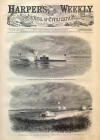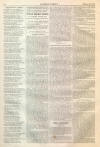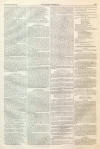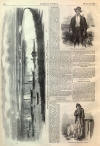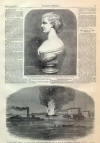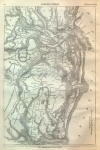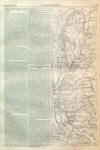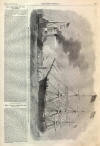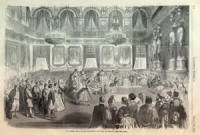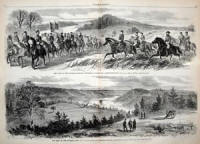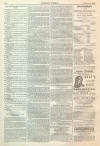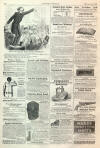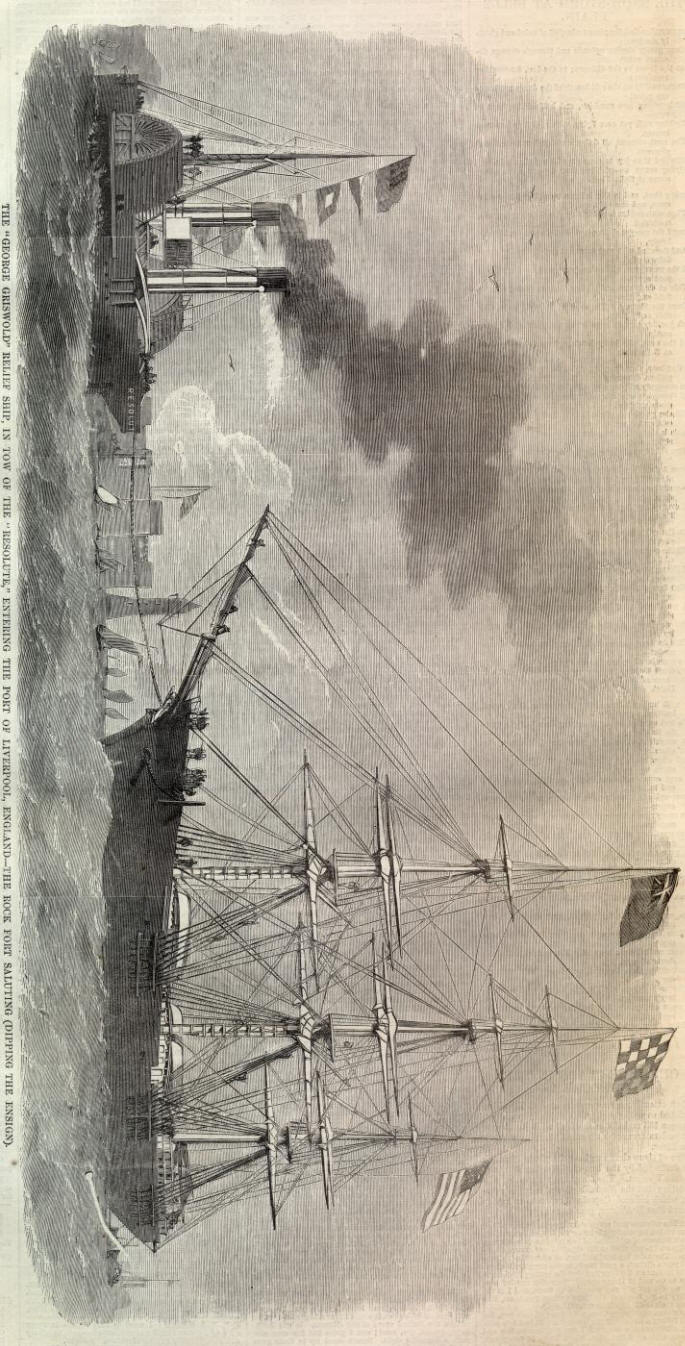THE
LATE BALL AT THE
TUILERIES.
WE publish on
page 204 a fine
illustration of the "BEES QUADRILLE" at the recent Grand Ball given by the
Emperor Napoleon at the Tuileries. It was the sensation of the day in Paris, and
has been much talked of here. The Times Paris correspondent wrote:
The pleasures of the Carnival
were never more brilliant than the present year. The amount of money spent in
dress is frightful; and while the poor are getting rich, the rich are getting
poor. One millinery establishment, that of Worth & Bobergh, of which Monsieur
Worth is the artist-designer of the toilets of his fair customers, made bills on
the single costume ball of the Empress on Monday last to the extent of $200,000!
And yet there were not quite four hundred ladies at the ball, and Worth &
Bobergh, although they are the fashionable house the present season, did not
furnish all the costumes at the ball. At this ball, which was private, and to
which invitations were made directly by the Empress, the following Americans
were invited, which was a very large list in view of the limited number of
persons at the ball: Mrs. Dayton, in robe of moire antique and powdered hair;
Miss Dayton, as Red Riding Hood; Mrs. Ridgway, of Philadelphia, in Marchioness;
Mme. Pilie, of New Orleans, powdered hair; Miss Minnie King, of Georgia, Undine?
Mrs. Penniman, of New York; Miss Penniman, Ophelia; Mrs. Moulton (Miss Greenough,
of Cambridge, Mass.), in Salamander; the Viscountess de Gabriac (Miss Phalen, of
New York), Hungarian costume; Mrs. Eustis (Miss Corcoran, of Washington); Miss
Eustis, of Louisiana; Mrs. Butterfield, of New York; Mrs. Dr. Thomas W. Evans,
of Paris; Miss Willing, of Philadelphia; the Countess de Moltke (Miss Hutton, of
New York), in Marchioness, covered with diamonds; and the Countess de Ganay
(Miss Ridgway, of Philadelphia). The American ladies, as those of your readers
will see who are acquainted with them, were chosen by her Majesty, not only on
account of their high position in French society, but also for their general
personal beauty and well-known taste in dress. It was an occasion for the
display of all the wealth in diamonds and other precious stones of which each
was possessed; for, while it is bad taste to make an inordinate display of
diamonds on ordinary occasions, a costume ball admits any extravagance in this
line the wearer chooses to make. The Empress represented on this occasion the
wife of a Doge of Venice of the sixteenth century, and were all the crown
jewels. She was literally cuirassed in diamonds. The jupe was black velvet, over
a robe of scarlet satin, bearing cascatelles of diamonds. The Imperial Prince,
dressed in black velvet knee-breeches and Venetian mantle, was present, and
danced twice—once with the Princess Anna Murat, and once with Mlle. de
Chateaubourg. His dance with his cousin the Princess Anna created no little
amusement, for while the Prince is only seven years old—and, of course, very
short for a ball-room performance—his partner was princely in dimensions as well
as in titles. The Princess Anna wore a Neapolitan costume. The Princess Mathilde
Bonaparte was in the costume of Anne of Cleves, of Holbein, and wore the whole
of her famous collection of emeralds. The Princess Clotilde Bonaparte, with the
hair frosted, had also copied a picture from the Louvre, and her robe of brocat
glistened like a rising sun. The Princess Gabriella (Augustine Bonaparte) was in
Syrian costume. The Princess de Metternich in Night, illuminated with diamonds.
The Countess de Persigny in burning fire. The Countess Walewska in Amazon Louis
XIV., powdered hair, corn-colored robe, gold buttons. The belle Italian Countess
Castiglione, dressed in a costume remarkable for its want of costume, was the
hit of the evening. She was dressed as "Salammbo," copied from the new
Carthaginian romance of Gustave Flaubert, author of Madame Bovary. Naked arms
and shoulders, short dress, and feet naked in sandals, dress of black velvet,
falling straight, with a long train, which latter was borne by the young Count
de Choiseul; who, in turn, had his face blackened to represent an Egyptian page,
and who, besides carrying the train of the famous daughter of Hamilcar, held
over her head an umbrella of the genuine Robinson Crusoe dimensions. The superb
Cathaginoise wore on her head a diadem of gold; her robe, which was without
waist, was held by a rich clasp of diamonds, and was copied exactly after the
floating tunics worn by the women of the upper classes in the period of
Carthaginian history in which Salammbo lived. She promenaded, not on the arm of
the faithful Matho of the romance, but on that of the Count Walewska, who
delivered her over to the Emperor, and who, in turn, left her to enjoy a long
and close conversation with the young Chevalier Nigra, Italian Embassador at
Paris. The "surprise" of the evening was the "Quadrille des Abeilles." At twelve
o'clock several large bee-hives were carried in by villagers in the costume of
Watteau's pictures, and from them issued a charming and graceful swarm of bees,
among whom were the Princesses Troubetskoi and Dolgorouki, M'lles. Brancard,
Coppens, Magnan, de Tascher, de Vatry, Kindiakoff, Errazu, Pereira, dressed in
golden corsage and shining wings, and who at once proceeded to dance the
quadrille, which had been arranged and taught them for the occasion by Merante,
of the Grand Opera.
THE
"GEORGE GRISWOLD" AT
LIVERPOOL.
WE illustrate on this page the
arrival of the relief ship "GEORGE GRISWOLD" at Liverpool, with the cargo
contributed by New York merchants and other citizens of the United States for
the relief of the suffering mechanics of England. She arrived on the 9th of
February. Her cargo consisted of 200 boxes of bacon, 50 barrels of pork, 500
bushels of corn, 500 barrels and boxes of bread, a quantity of rice, and 13,236
barrels of flour. The contributions on board from the New York Produce Exchange
were 1500 barrels of flour, 500 bushels of corn, and 50 barrels of pork. She
left New York on the 13th of January, and after an average run across the
Atlantic was on the 9th February telegraphed off Port Lynas, sailing for
Liverpool with a fair wind. As the telegraph was published and became generally
known the New Steam Tug Company dispatched their powerful boat Resolute
gratuitously to assist the ship into port. The Resolute fell in with the ship
about three o'clock, near the bar, and immediately took her in tow; but they did
not reach the anchorage in the river until nearly three hours after high tide.
The George Griswold had the American and English flags flying, and the steam-tug
was also gayly decorated for the occasion. On reaching the Rock Fort she was
welcomed with the customary salute by lowering a flag, which was duly
acknowledged, and shortly after entering the river a salute of eighteen guns was
fired from the North Battery. She reached the anchorage off Seacombe about half
past five P.M. Her coming was cordially greeted by a great concourse of people.
